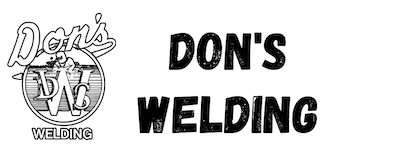IG and TIG welding are two of the most commonly used welding processes in the industry. With expertise in both techniques, Don’s Welding has been providing high-quality welding services to the Buffalo, NY.
MIG & TIG Welding Services in WNY and Buffalo
When it comes to welding, there are a variety of techniques available, but two of the most popular ones are MIG and TIG welding. These two techniques have their unique features and can be used for different purposes. In this article, we’ll take a closer look at both MIG and TIG welding, their differences, and some frequently asked questions to help you make the right choice for your welding needs.
What is MIG Welding?
MIG stands for Metal Inert Gas. In MIG welding, a wire is continuously fed through a gun and melted, forming a pool of molten metal that joins two pieces of metal together. The wire used in MIG welding is consumable and can be made from various materials, including stainless steel, aluminum, and steel.
MIG welding is ideal for working with thicker materials as it produces a deep penetration weld. Additionally, MIG welding is faster than TIG welding and can be used to weld a variety of metals, making it an excellent choice for automotive, construction, and manufacturing applications.
What is TIG Welding?
TIG stands for Tungsten Inert Gas. In TIG welding, an arc is created between a tungsten electrode and the metal being welded, forming a molten puddle that is used to join two pieces of metal together. A separate filler rod is then used to add material to the weld pool.
TIG welding is known for its precision and ability to produce clean, high-quality welds. It’s commonly used in industries such as aerospace, automotive, and metalworking, where precise welds are essential.
Differences Between MIG and TIG Welding
MIG and TIG welding have several differences, including:
- Welding Speed: MIG welding is faster than TIG welding, making it an ideal choice for larger projects.
- Heat: TIG welding generates less heat than MIG welding, which makes it ideal for welding thinner materials.
- Precision: TIG welding is more precise than MIG welding and is ideal for welding intricate parts and thinner materials.
- Weld Quality: TIG welding produces a higher quality weld than MIG welding, making it an excellent choice for critical applications.
MIG & TIG FAQ's
MIG welding is easier to learn than TIG welding. It's a great choice for beginners because the wire feeder handles the wire feed rate, which makes it easier to control the weld.
MIG welding can be used to weld a variety of materials, including steel, stainless steel, and aluminum. TIG welding is ideal for welding materials such as aluminum, magnesium, and titanium.
MIG welding is the preferred choice for automotive repair as it's faster and easier to use. However, TIG welding is still used for certain applications such as repairing aluminum parts.

